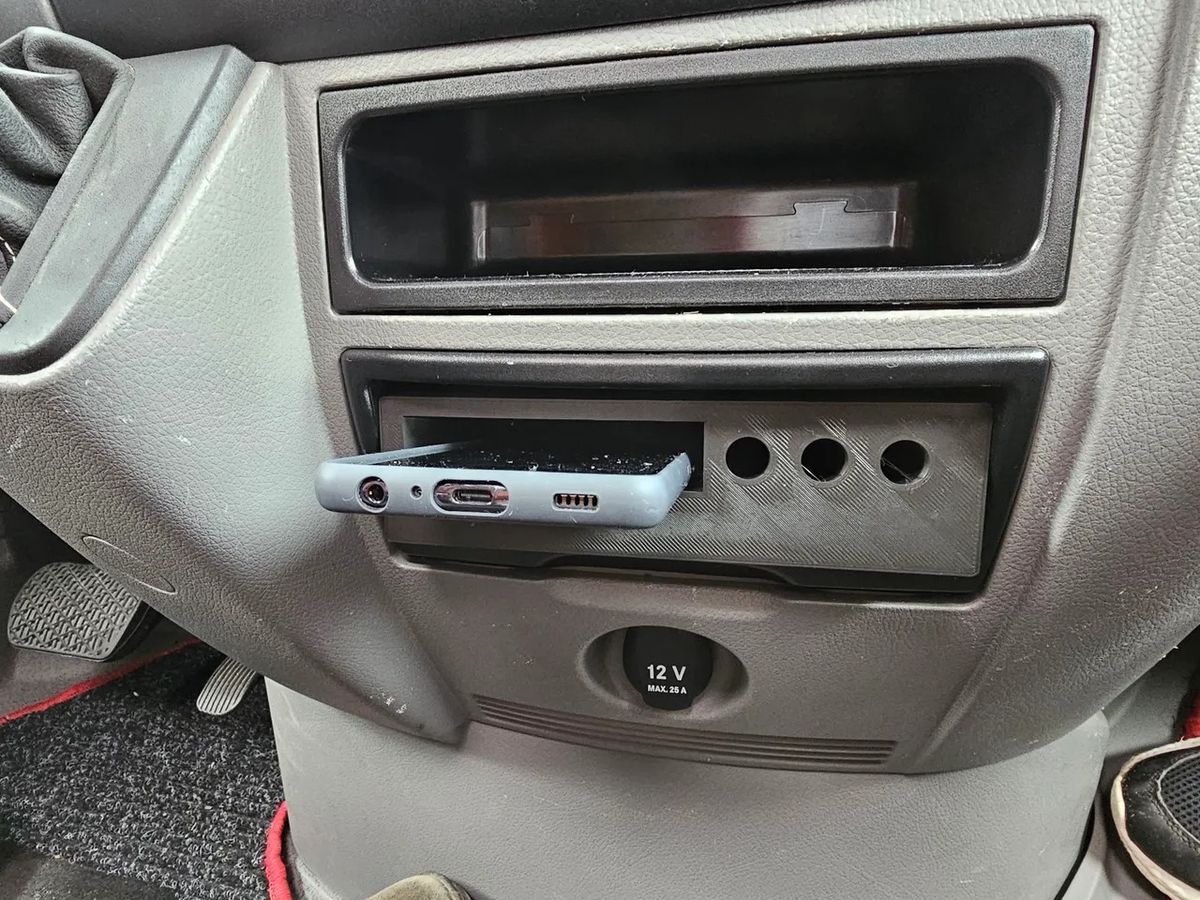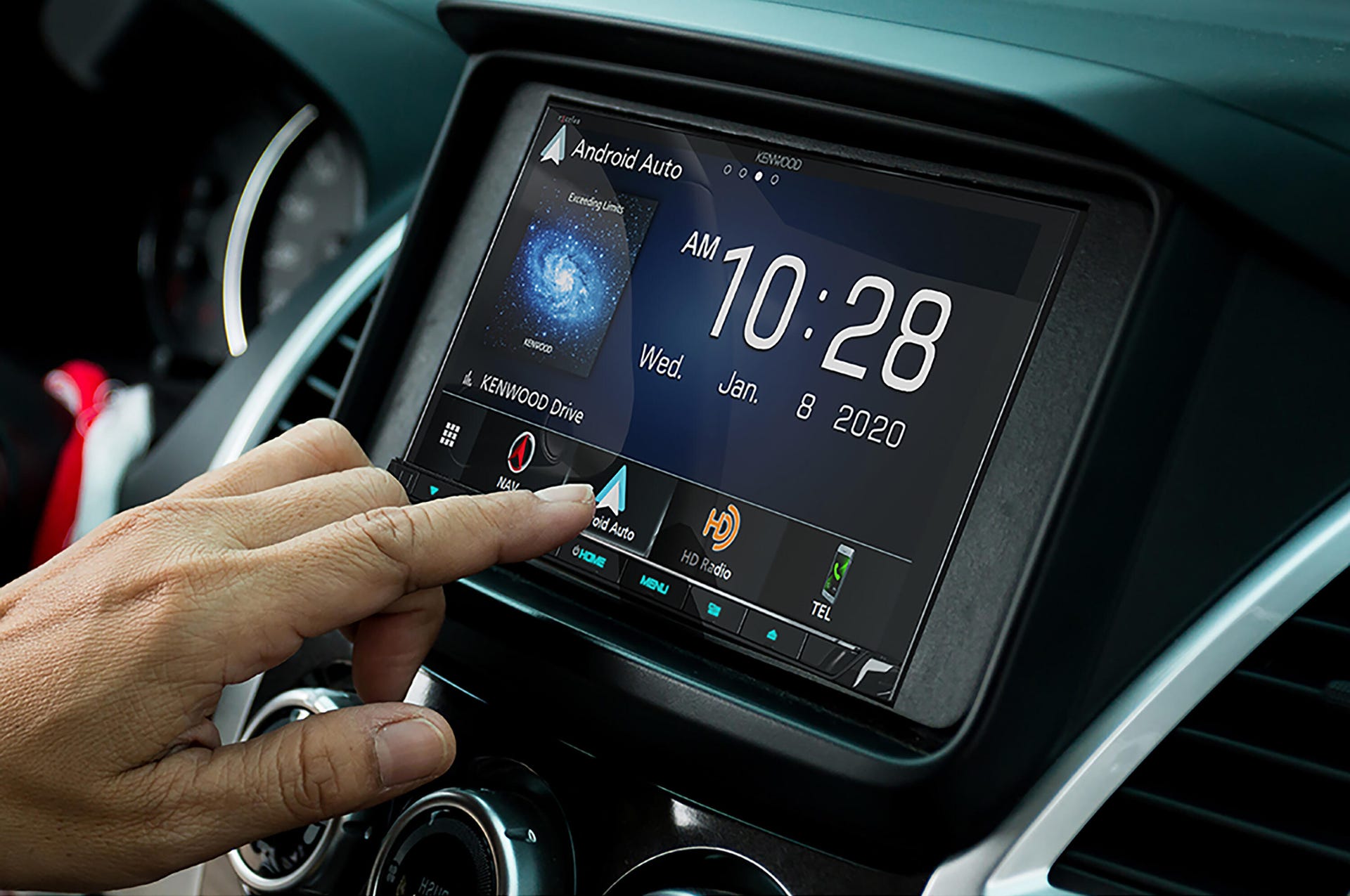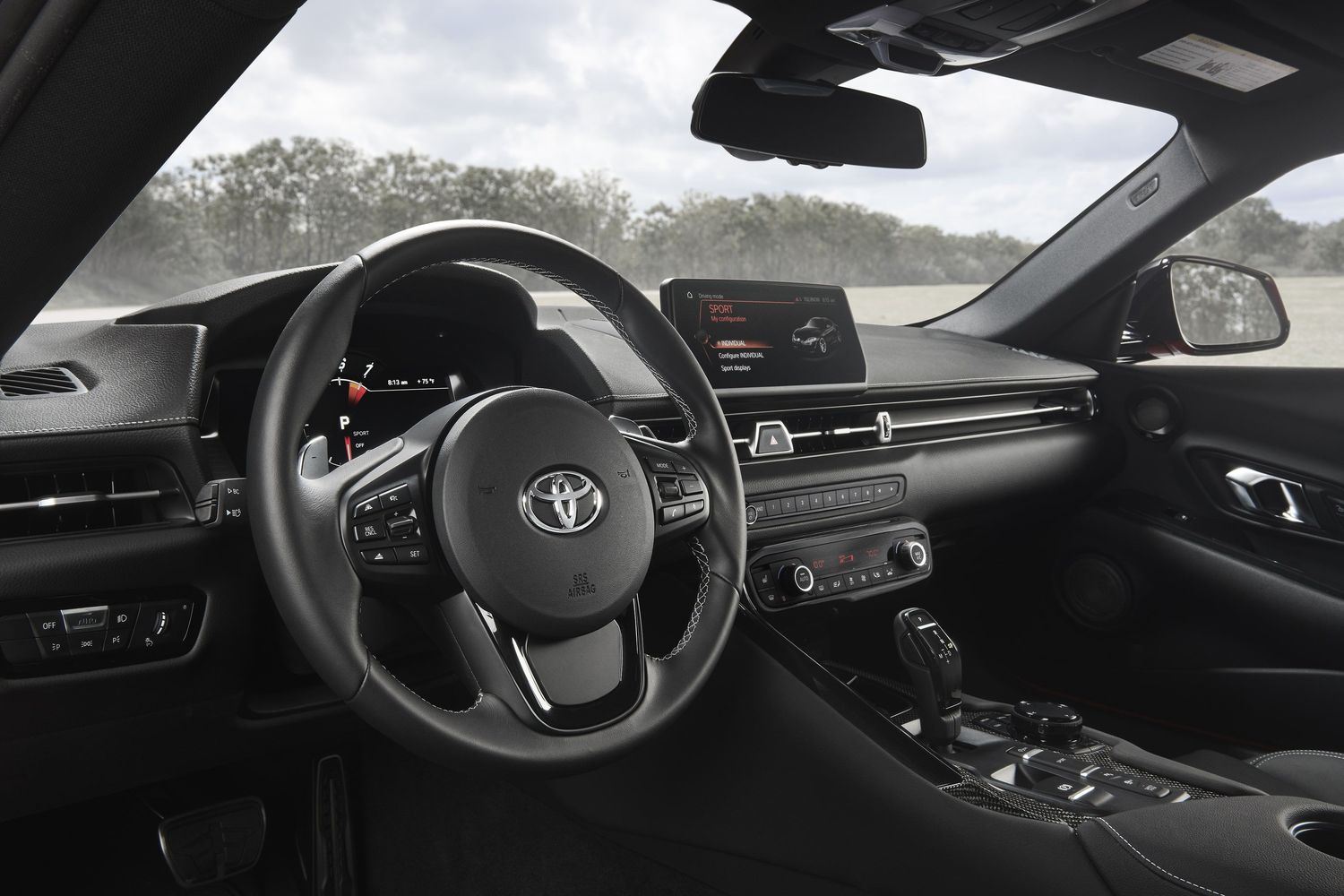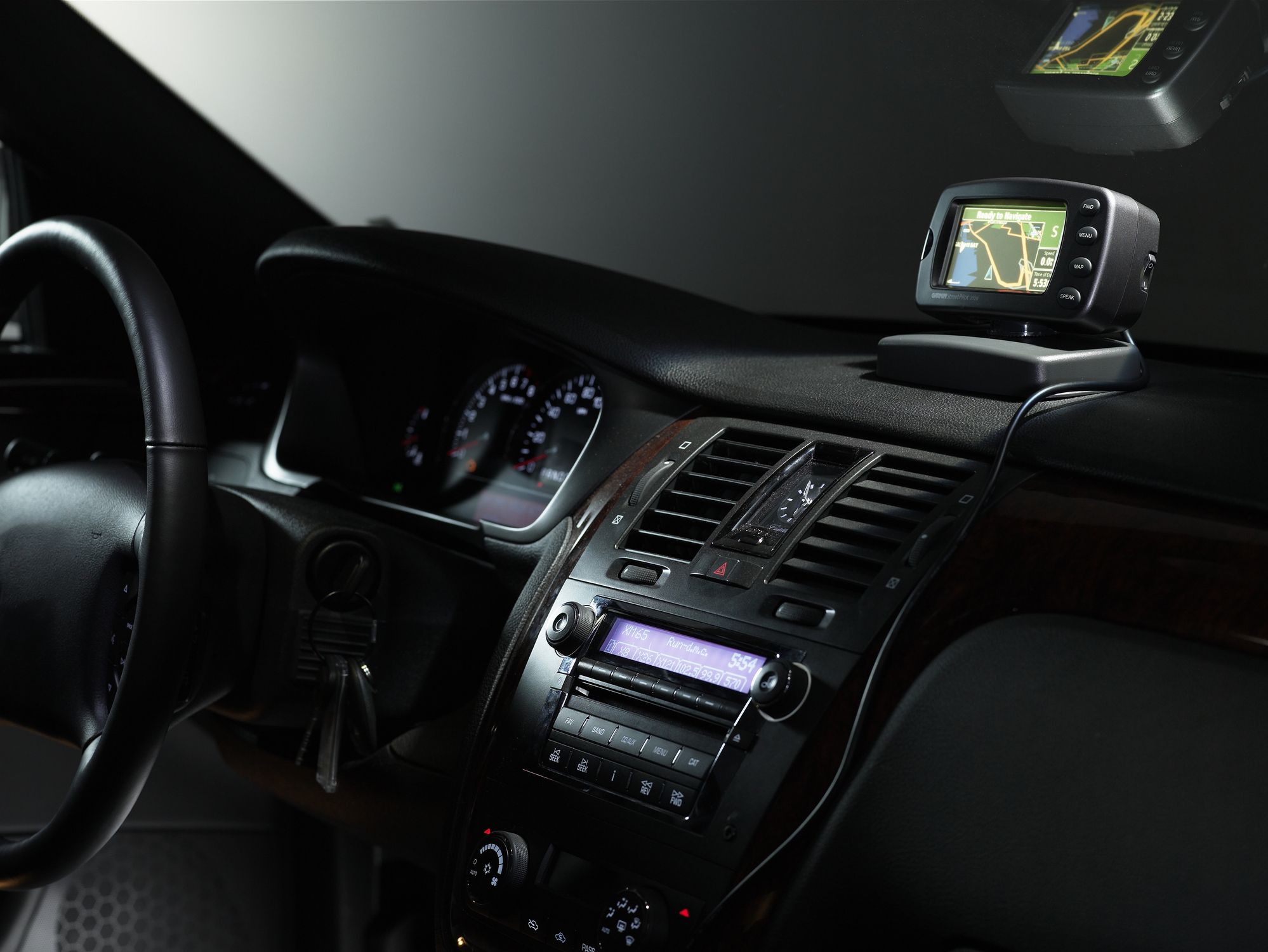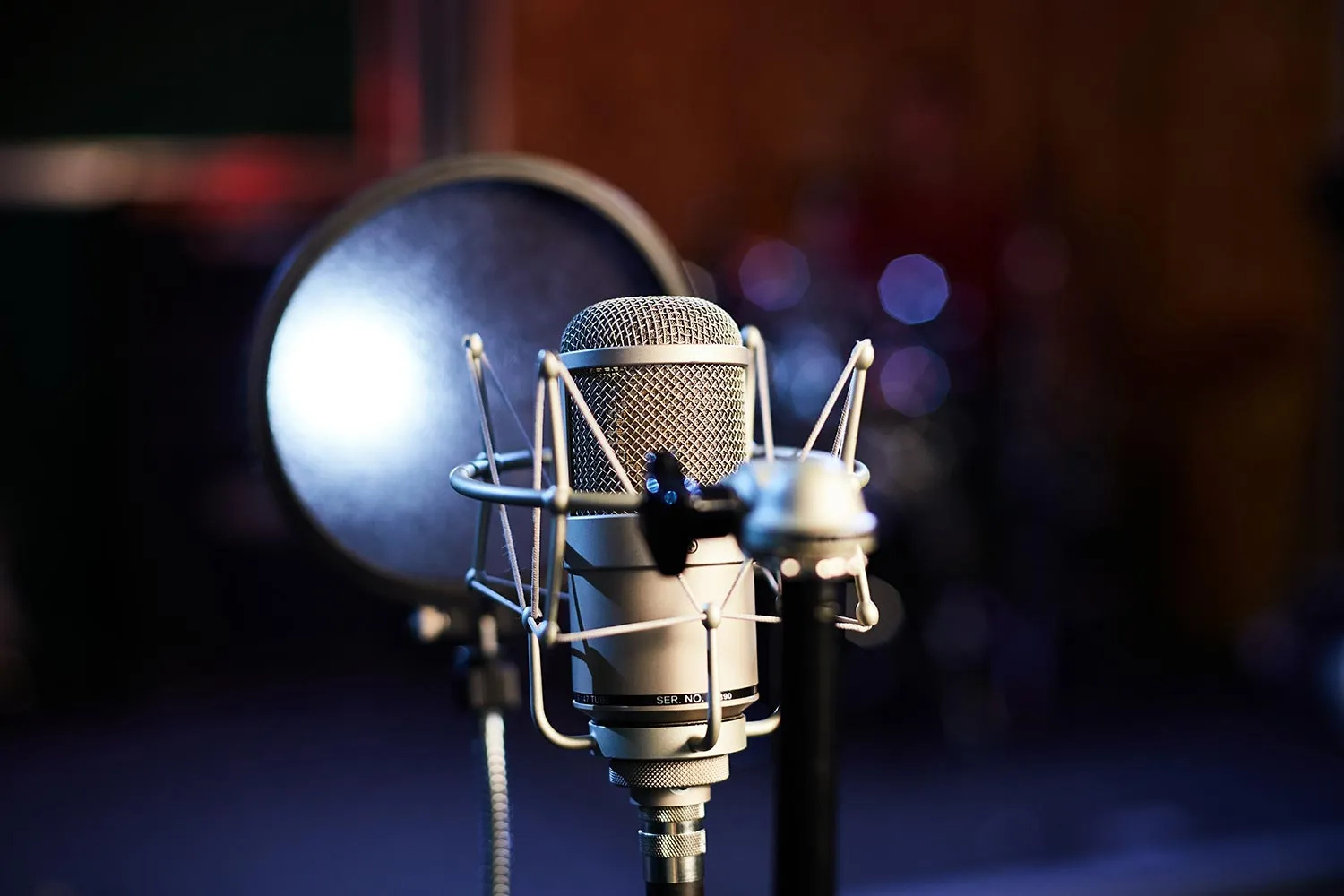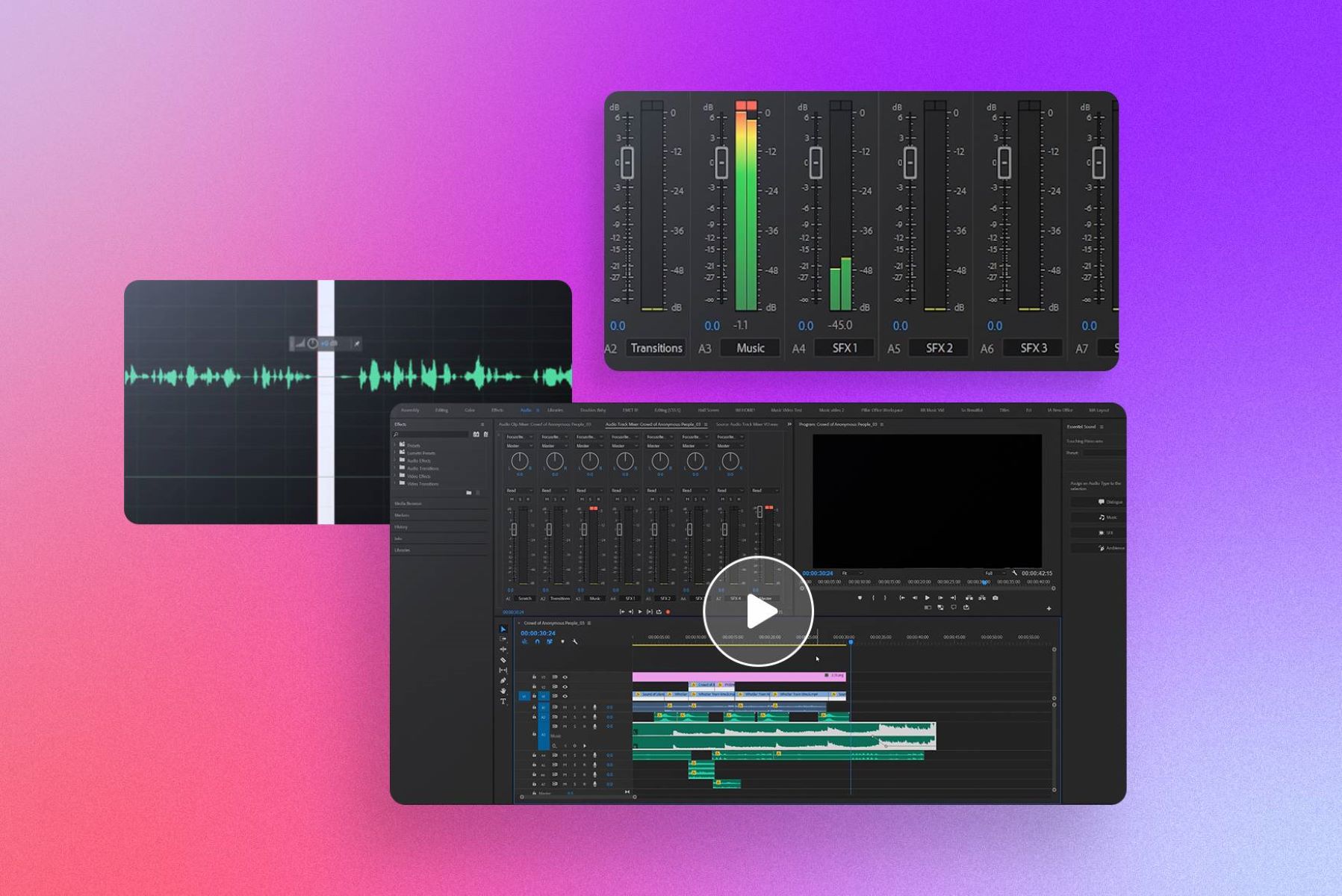Home>Production & Technology>Stereo>How Do I Get Rid Of The Engine Noise In My Car Stereo
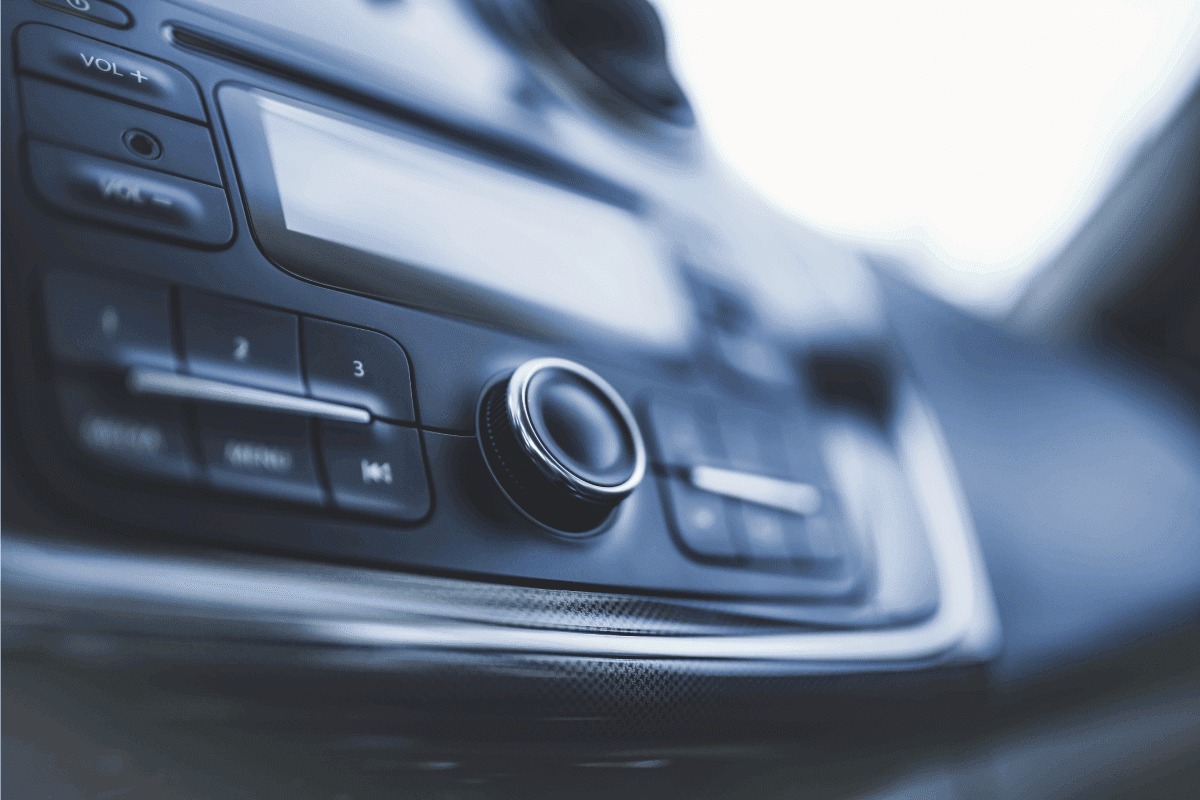

Stereo
How Do I Get Rid Of The Engine Noise In My Car Stereo
Modified: January 22, 2024
Looking to eliminate engine noise in your car stereo? Discover effective tips and solutions to get rid of unwanted noise and enjoy a crystal clear stereo experience.
(Many of the links in this article redirect to a specific reviewed product. Your purchase of these products through affiliate links helps to generate commission for AudioLover.com, at no extra cost. Learn more)
Table of Contents
- Introduction
- Causes of Engine Noise in Car Stereo
- How to Identify Engine Noise in Car Stereo
- Common Solutions for Reducing Engine Noise in Car Stereo
- Grounding the Car Stereo System
- Using Noise Filters
- Checking and Replacing Damaged Cables
- Installing a Noise Suppressor
- Properly Routing Audio Cables
- Using Shielded Audio Cables
- Insulating the Car Cabin from Engine Noise
- Conclusion
Introduction
Engine noise can be a frustrating issue when it comes to enjoying your car stereo system. It can disrupt the clarity of your music, making it difficult to fully immerse yourself in the sound experience. Whether it’s a buzzing, humming, or whining noise, dealing with engine noise in your car stereo can be a challenge.
There are several reasons why engine noise can seep into your audio system. Electrical interference, poor grounding, damaged cables, or even the layout of your car’s wiring can contribute to this problem. The good news is that there are effective solutions available to help mitigate engine noise and restore the quality of your car stereo.
In this article, we will explore the causes of engine noise in car stereos, provide tips on how to identify the issue, and offer common solutions to reduce or eliminate the unwanted noise. By following these steps, you can enjoy crystal-clear sound in your car without the interference of engine noise.
Causes of Engine Noise in Car Stereo
Engine noise in your car stereo can be caused by a variety of factors. Understanding the root causes of this issue is crucial in finding an appropriate solution. Here are some common culprits:
- Electrical Interference: Engine noise can result from electrical interference generated by the ignition system, alternator, or other components in the car’s electrical system. This interference can be picked up by the audio cables, causing unwanted noise in the stereo.
- Poor Grounding: Inadequate grounding is a common cause of engine noise in car stereos. When the car stereo is not properly grounded, it can create a ground loop, which leads to buzzing or humming sounds in the audio system.
- Radio Frequency Interference (RFI): RFI can come from various sources such as mobile phones, nearby radio towers, or other electronic devices. It can cause static, buzzing, or whining noises in the car stereo.
- Damaged or Poor Quality Cables: Faulty or low-quality audio cables can introduce noise into the car stereo system. Frayed or loose connections can create static or buzzing sounds, compromising the audio quality.
- Engine Design and Layout: The physical proximity of the car’s engine components to the audio system can contribute to engine noise. Vibrations and electromagnetic radiation from the engine can interfere with the proper functioning of the stereo.
- Insufficient shielding: Lack of proper shielding in the car’s electrical system can allow unwanted electromagnetic interference (EMI) to affect the audio signals, resulting in noise in the car stereo.
- Inadequate Power Supply: A weak or fluctuating power supply to the car stereo can cause engine noise. Insufficient power can lead to poor signal transmission and result in distorted or noisy audio.
Identifying the specific cause of engine noise in your car stereo is essential for effectively addressing the issue. The next section will provide guidance on how to identify the source of the noise and troubleshoot the problem.
How to Identify Engine Noise in Car Stereo
If you’re experiencing engine noise in your car stereo, it’s important to accurately identify the source of the problem before attempting any solutions. Here are some steps to help you pinpoint the cause of the engine noise:
- Listen for the Noise: Pay attention to the specific characteristics of the noise. Is it a constant hum, a buzzing sound, or a high-pitched whine? Does the noise change with the engine speed or when you accelerate?
- Isolate the Source: Determine whether the engine noise is present when the car stereo is on, regardless of whether the engine is running or not. This will help you determine whether the issue is related to the car’s electrical system or the audio system itself.
- Test Different Audio Sources: Check if the engine noise is only present with specific audio sources, such as FM/AM radio, CD player, or when connected to external devices like smartphones or MP3 players. This can give you an indication of whether the issue lies with the audio source or the car stereo system.
- Inspect the Wiring and Connections: Examine the audio cables and connections for any signs of damage, loose connections, or incorrect wiring. Ensure that all cables are properly seated and secure in their respective sockets.
- Temporarily Disconnect Components: Disconnect any additional components, such as amplifiers, equalizers, or external devices, to check if the engine noise persists. This can help determine if the noise is introduced by these components or if it’s specific to the car stereo system.
- Use a Noise Test CD or App: There are specific noise test CDs or smartphone apps available that can help identify unwanted engine noise. These tools generate specific sound patterns that can reveal the presence and nature of the noise.
- Consult a Professional: If you’re unable to identify the source of the engine noise or if you’re not confident in troubleshooting yourself, it may be best to consult a professional car audio technician. They have the expertise and tools to diagnose and resolve the issue accurately.
By following these steps, you can narrow down the source of engine noise in your car stereo and proceed with appropriate solutions. The next section will discuss common techniques and solutions to reduce or eliminate engine noise in your car stereo.
Common Solutions for Reducing Engine Noise in Car Stereo
Dealing with engine noise in your car stereo can be frustrating, but there are several effective solutions available to help mitigate the issue. Here are some common techniques and solutions for reducing engine noise:
- Grounding the car stereo system: Ensure that the car stereo has a solid ground connection. Use a dedicated ground wire that connects directly to a clean, unpainted metal surface on the vehicle’s body or chassis. This can help eliminate ground loops and reduce unwanted noise.
- Using noise filters: Install noise filters or isolators in the audio signal path to suppress unwanted engine noise. These filters can help remove or reduce electrical interference and improve the overall audio quality.
- Checking and replacing damaged cables: Inspect all audio cables for any signs of damage, such as cuts, frayed wires, or loose connections. Replace any faulty cables with high-quality shielded cables to minimize interference and noise.
- Installing a noise suppressor: Consider installing a noise suppressor or ground loop isolator between the car stereo and the power source. These devices can effectively reduce engine noise and improve the audio signal quality.
- Properly routing audio cables: Separate audio cables from power cables and avoid running them alongside each other. Keep audio cables away from engine components and moving parts to minimize the risk of electromagnetic interference.
- Using shielded audio cables: When replacing or upgrading cables, opt for shielded audio cables. These cables have an extra layer of shielding that helps prevent interference and reduce engine noise in the car stereo system.
- Insulating the car cabin from engine noise: Use sound deadening materials, such as acoustic mats or foam, to reduce the transmission of engine noise into the car cabin. Applying these materials to the doors, floor, roof, and trunk can create a quieter environment for your car stereo system.
It’s important to note that every car stereo system is unique, and the effectiveness of these solutions may vary. It may require some trial and error to find the most effective combination of techniques for your specific setup. If you’re unsure about performing these solutions yourself, consult a professional car audio technician for assistance.
By implementing these solutions, you can greatly reduce or eliminate unwanted engine noise and enjoy a clearer and more enjoyable audio experience in your car stereo system.
Grounding the Car Stereo System
One of the most common causes of engine noise in a car stereo system is poor grounding. Grounding ensures the proper flow of electrical current and helps eliminate ground loops, which can introduce unwanted noise. Here are some steps to help properly ground your car stereo system:
- Choose a Suitable Grounding Point: Select a clean, unpainted metal surface on the vehicle’s body or chassis as the grounding point. Ensure that the surface is free from rust, paint, and corrosion to establish a good electrical connection.
- Clean the Grounding Point: Use sandpaper or a wire brush to remove any dirt, paint, or rust from the chosen grounding point. This will help establish a clean and solid connection.
- Connect the Ground Wire: Attach one end of a dedicated ground wire to the grounding point. Strip the insulation off the other end of the wire and connect it to the car stereo’s ground terminal. Alternatively, you can connect it to a connector on the rear of the stereo labeled “GND” or “Ground.”
- Secure the Ground Wire: Ensure that the ground wire is securely fastened to both the grounding point and the car stereo’s ground terminal. Use suitable connectors or crimp terminals to ensure a reliable connection.
- Check the Grounding Path: Inspect the grounding wire’s path to ensure it is clear of obstructions and away from any moving parts or heat sources. Secure the wire using zip ties or other suitable fasteners to prevent it from coming loose or becoming damaged.
- Test the Ground Connection: Turn on the car stereo and check for any residual engine noise. If the noise is significantly reduced or eliminated, this indicates that the grounding connection is successful.
- Consider Additional Grounding Techniques: In some cases, a single grounding point may not be sufficient to eliminate all engine noise. In such situations, you may need to create additional ground connections for specific components, such as amplifiers or equalizers, to further reduce noise.
Properly grounding the car stereo system is an essential step in minimizing engine noise. It helps provide a stable and noise-free electrical connection, allowing for clean audio signal transmission. If you are unsure about the grounding process or encounter difficulties, it is recommended to consult a professional car audio technician to ensure a proper and effective grounding solution.
Using Noise Filters
Noise filters are electronic devices designed to suppress or eliminate unwanted electrical interference in a car stereo system. They work by filtering out specific frequencies associated with engine noise and other sources of interference. Here’s how you can effectively use noise filters to reduce engine noise:
- Determine the Type of Noise Filter: There are different types of noise filters available, including inline filters and ground loop isolators. Inline filters are inserted into the audio signal path, while ground loop isolators separate the ground connection to break the electrical loop that causes noise. Choose the type of noise filter that best suits your specific needs.
- Identify the Noisy Signal Source: Determine which audio source or component is generating the engine noise. If the noise is present across all audio sources, consider installing the noise filter between the car stereo’s output and the amplifier input. If the noise is specific to a particular input source, such as an auxiliary input, install the filter between the source and the car stereo system.
- Locate the Audio Input/Output Connections: Identify the audio input/output connections where you will install the noise filter. These connections are typically RCA or auxiliary (3.5mm) input/output jacks. Ensure that the car stereo and the audio component are turned off before proceeding.
- Connect the Noise Filter: Insert the noise filter into the audio signal path by connecting it between the car stereo and the input/output jacks. Follow the instructions provided by the manufacturer for the specific type of noise filter you are using. Ensure a secure and proper connection to reduce signal loss or interference.
- Secure and Test the Connections: Once the noise filter is in place, secure all connections and double-check that everything is properly connected. Turn on the car stereo and test for any remaining engine noise. Adjust the settings on the noise filter if necessary to optimize its noise reduction capabilities.
- Consider Multiple Noise Filters: In some cases, a single noise filter may not completely eliminate all types of engine noise. Consider using multiple noise filters if you have additional audio sources or components that contribute to the unwanted noise. Experiment with different combinations and placements of the filters to achieve the best results.
Noise filters can be efficient in reducing engine noise by blocking or reducing unwanted electrical interference. However, it’s important to choose high-quality filters that are specifically designed for car audio applications. If you’re unsure about the installation process or which noise filter to use, consult a professional car audio technician for expert guidance and assistance.
Checking and Replacing Damaged Cables
Damaged or low-quality audio cables can introduce noise and interference into your car stereo system. It’s important to regularly inspect and replace any cables that show signs of damage or wear. Follow these steps to check and replace damaged cables:
- Inspect the Cables: Carefully examine all audio cables connected to your car stereo system. Look for physical damage such as cuts, frayed wires, or exposed copper. Check the connectors for any signs of corrosion or loose connections.
- Test the Cables: Use a multimeter or cable tester to check the continuity and signal integrity of the audio cables. This will help identify any internal wiring problems or shorts that may be causing the noise.
- Replace Damaged Cables: If you find any damaged cables during the inspection or testing process, it’s crucial to replace them. Replace the damaged cables with high-quality audio cables that are suitable for car audio applications.
- Use Shielded Audio Cables: Consider using shielded audio cables, which have an extra layer of protection against electromagnetic interference (EMI). This shielding helps minimize the impact of external electrical interference on the audio signal, reducing the chance of engine noise.
- Properly Seat the Connections: When replacing the cables, ensure that all connections are securely seated. Make sure the connectors are inserted fully into their respective sockets to ensure a stable and reliable connection.
- Separate Audio and Power Cables: Keep the audio cables separated from power cables to minimize the risk of electromagnetic interference. Avoid running them parallel to each other and maintain a reasonable distance between them.
- Secure and Route the Cables: Secure the audio cables using zip ties or other suitable fasteners to prevent them from moving or becoming loose. Properly route the cables away from engine components and moving parts to minimize the risk of physical damage.
By regularly checking and replacing damaged cables, you can ensure optimal audio signal transmission and minimize the chances of engine noise creeping into your car stereo system. High-quality cables and proper installation techniques will go a long way in enhancing sound quality and reducing unwanted noise.
Installing a Noise Suppressor
If you’re still experiencing engine noise in your car stereo system after trying other troubleshooting methods, installing a noise suppressor can help eliminate or reduce unwanted electrical interference. A noise suppressor is an electronic device designed to filter out specific frequencies and suppress engine noise. Here’s how you can install a noise suppressor:
- Choose the Right Noise Suppressor: Select a noise suppressor that is compatible with your car stereo system and the type of engine noise you are experiencing. Noise suppressors are available in various types, such as in-line filters or ground loop isolators, so choose one that suits your specific needs.
- Locate the Power Supply Connection: Identify the power supply connection point for the noise suppressor. Typically, this is the positive (+) terminal of the car stereo or another suitable power source.
- Disconnect the Power Supply: Before connecting the noise suppressor, make sure to turn off the car stereo and disconnect the power supply. This will ensure your safety and prevent any potential damage to the stereo system or the noise suppressor.
- Install the Noise Suppressor: Connect the noise suppressor to the power supply connection point. Follow the manufacturer’s instructions for the specific type of noise suppressor you are using. Typically, this involves connecting the positive wire of the noise suppressor to the power supply terminal and the negative wire to a suitable ground point.
- Secure the Connections: Ensure that all connections are securely fastened and properly insulated. Use appropriate connectors or crimp terminals to ensure a reliable and stable connection.
- Test the Noise Suppressor: Turn on the car stereo and check for any remaining engine noise. If the noise is significantly reduced or eliminated, it indicates that the noise suppressor is effectively filtering out the unwanted interference.
- Additional Considerations: Keep in mind that different noise suppressors may provide varying levels of suppression. If the first noise suppressor does not completely eliminate the engine noise, you may need to experiment with different models or configurations to achieve the desired result.
Installing a noise suppressor can be an effective solution for reducing engine noise in your car stereo system. However, if you are unsure about the installation process or encounter difficulties, it is always recommended to consult a professional car audio technician for assistance. They can help assess your specific situation and provide expert advice on the best noise suppressor for your needs.
Properly Routing Audio Cables
The routing of audio cables in your car stereo system plays a crucial role in minimizing the chances of engine noise. Proper cable routing helps reduce the risk of electromagnetic interference (EMI) and keeps the audio signals clean and free from unwanted noise. Here are some tips to properly route your audio cables:
- Separate Audio and Power Cables: Keep the audio cables separate from power cables to minimize the risk of EMI. Avoid running them parallel to each other and maintain a reasonable distance between them.
- Avoid Routing Cables near Engine Components: Engine components can generate vibrations and electromagnetic radiation that can interfere with audio signals. Keep the audio cables away from engine components like the alternator, spark plugs, or ignition coils.
- Use Existing Cable Routing Paths: Take advantage of existing cable routing paths within your vehicle. Many vehicles have designated cable routes that can help protect audio cables and minimize the risk of interference. Check the vehicle’s manual or consult a professional if you’re unsure of the routing paths.
- Use Cable Clips or Ties: Secure the audio cables using clips or zip ties. This will help to prevent them from coming into contact with moving parts or becoming loose. Ensure that the cables are properly secured and do not impinge on other vehicle systems.
- Maintain Adequate Clearance: Ensure that the audio cables have sufficient clearance from any sharp edges or metal surfaces. This will help prevent any potential damage to the cables and maintain the integrity of the audio signal.
- Avoid Pinching or Twisting Cables: Be cautious not to pinch or twist the cables excessively during routing. Twisted or damaged cables can result in signal loss or unwanted noise. Handle the cables with care to maintain their quality.
- Use Grommets: When passing through metal panels or firewall, use grommets to protect the cables from abrasion and potential interference. Grommets provide a secure and sealed passage for cables, reducing the risk of damage and unwanted noise.
- Regularly Inspect and Adjust: Periodically inspect your cable routing to ensure that the cables are properly seated and have not become loose or damaged. Make any necessary adjustments to maintain optimal cable routing.
Properly routing audio cables in your car stereo system is essential to minimize the risk of engine noise and maximize the audio quality. By following these tips, you can create an optimal cable routing setup that promotes clean and uninterrupted audio signals in your car stereo.
Using Shielded Audio Cables
Using shielded audio cables is a highly effective way to minimize engine noise and reduce electromagnetic interference (EMI) in your car stereo system. Shielded cables feature an extra layer of shielding that helps to block external interference and maintain cleaner audio signals. Here’s how you can benefit from using shielded audio cables:
- Minimize Electromagnetic Interference: Shielded audio cables are designed to minimize the impact of external electromagnetic fields on the audio signals. The shielding helps prevent EMI from sources like power cables, amplifiers, or nearby electronic devices, resulting in cleaner and more accurate audio reproduction.
- Reduce Engine Noise: Shielded cables are particularly effective at reducing engine noise caused by electrical interference. The shielding helps to block the electromagnetic radiation generated by the engine, preventing it from interfering with the audio signals and resulting in a clearer and more enjoyable listening experience.
- Improve Signal Transmission: Shielded cables provide better signal transmission by reducing signal loss and degradation. They help maintain the integrity of the audio signals, allowing them to travel from the source to the amplifier or speakers without any interference or degradation.
- Enhance Audio Quality: By minimizing interference and reducing signal degradation, shielded audio cables can significantly improve audio quality. You’ll experience greater fidelity, clarity, and detail in your music, ensuring that you can fully enjoy the original sound intended by the artists.
- Choose High-Quality Shielded Cables: It’s important to invest in high-quality shielded audio cables that are specifically designed for car audio applications. Look for cables with a high level of shielding, such as those with multiple layers of shielding or braided shielding, as they provide superior noise rejection and durability.
- Properly Connect and Route the Cables: When installing shielded cables, ensure that the shielding is properly connected and grounded. Follow the manufacturer’s instructions for the correct installation procedure to maximize the noise-reducing capabilities. Additionally, route the cables away from potential sources of interference such as power cables or engine components.
- Consider Cable Length: Excessive cable length can lead to increased susceptibility to noise and interference. Keep cable lengths as short as possible, especially for sensitive audio signals, to minimize the impact of external noise and maintain the signal integrity.
- Regularly Inspect and Maintain: Periodically inspect your shielded audio cables for any signs of damage or wear. Ensure that the cables are properly seated, secured, and free from any kinks or twists that could affect their performance. Replace any damaged cables promptly to maintain optimal audio quality.
By using high-quality shielded audio cables in your car stereo system, you can significantly reduce engine noise and enjoy a cleaner, more immersive audio experience. The shielding provides effective protection against electromagnetic interference and helps maintain the integrity of the audio signals, allowing you to fully appreciate your favorite music while on the road.
Insulating the Car Cabin from Engine Noise
Insulating the car cabin from engine noise is an effective way to create a quieter environment for your car stereo system. Engine noise can seep into the cabin and interfere with the audio playback, reducing the overall sound quality. Here are some methods to help insulate your car cabin from engine noise:
- Apply Sound Deadening Materials: Use sound deadening materials, such as acoustic mats or foam, to reduce the transmission of engine noise into the car cabin. Apply these materials to the doors, floor, roof, and trunk to absorb and dampen the vibrations and noise.
- Focus on Problem Areas: Identify areas where engine noise is most prominent. Pay close attention to the firewall, wheel wells, and areas around the engine compartment. Apply additional layers of sound deadening material in these areas to provide extra insulation against engine noise.
- Seal Gaps and Openings: Inspect the cabin for any gaps, cracks, or openings that may allow engine noise to enter. Use sealant or weatherstripping to seal these areas, ensuring a tight and secure seal. This will help prevent noise leakage and improve the effectiveness of the sound insulation.
- Upgrade Weatherstripping: Check the weatherstripping around the doors and windows. Damaged or worn weatherstripping can allow noise to penetrate the cabin more easily. Consider replacing it with high-quality weatherstripping to enhance the sound insulation properties.
- Install Acoustic Glass: If possible, consider upgrading the car’s windows to acoustic glass. Acoustic glass is designed to reduce noise transmission and can significantly contribute to a quieter cabin environment. Consult with a professional installer to determine the feasibility and best options for your vehicle.
- Reduce Vibrations: Use materials such as vibration-damping sheets or foam to minimize vibrations caused by engine components. Apply these materials to areas near vibrating parts or panels to reduce noise resulting from mechanical vibrations.
- Address Exhaust System Noise: Inspect and maintain your car’s exhaust system to ensure it is functioning properly. A faulty or damaged exhaust system can contribute to increased engine noise. Repair or replace any damaged components to minimize exhaust noise infiltration into the cabin.
- Consider Professional Installation: If you’re unsure about the insulation process or want to achieve maximum effectiveness, consult with a professional car audio installer. They have the expertise and experience to recommend and implement the most effective sound insulation solutions for your specific vehicle.
By insulating the car cabin from engine noise, you can create a quieter and more enjoyable audio environment for your car stereo system. The combination of sound deadening materials, sealing gaps, and upgrading components can significantly reduce engine noise infiltration, allowing you to fully immerse yourself in the music without unwanted interference.
Conclusion
Dealing with engine noise in your car stereo system can be a frustrating experience, but with the right techniques and solutions, you can significantly reduce or even eliminate unwanted noise. By understanding the causes of engine noise, identifying the source of the problem, and implementing the appropriate solutions, you can enjoy a clearer and more immersive audio experience in your car.
From grounding the car stereo system to using noise filters, checking and replacing damaged cables, installing a noise suppressor, properly routing audio cables, utilizing shielded audio cables, and insulating the car cabin from engine noise, there are various effective methods to combat unwanted noise. These techniques work together to minimize electrical interference, reduce the impact of engine vibrations and electromagnetic radiation, and create a quieter audio environment.
Whether you choose to tackle the issue yourself or seek professional assistance, it’s essential to approach the problem systematically and patiently. Take the time to identify the specific source of the engine noise and apply the solutions that best address your unique situation.
Remember, a high-quality car stereo system deserves optimal sound quality, free from the interference of engine noise. By implementing the techniques outlined in this article, you can enhance your audio experience and enjoy your favorite music in its purest form while on the road.

